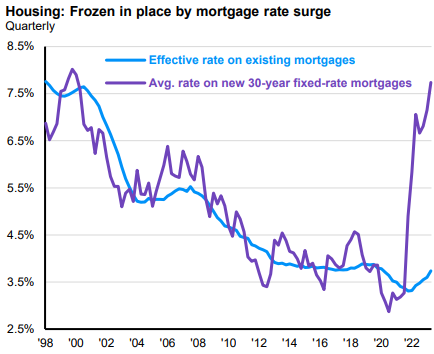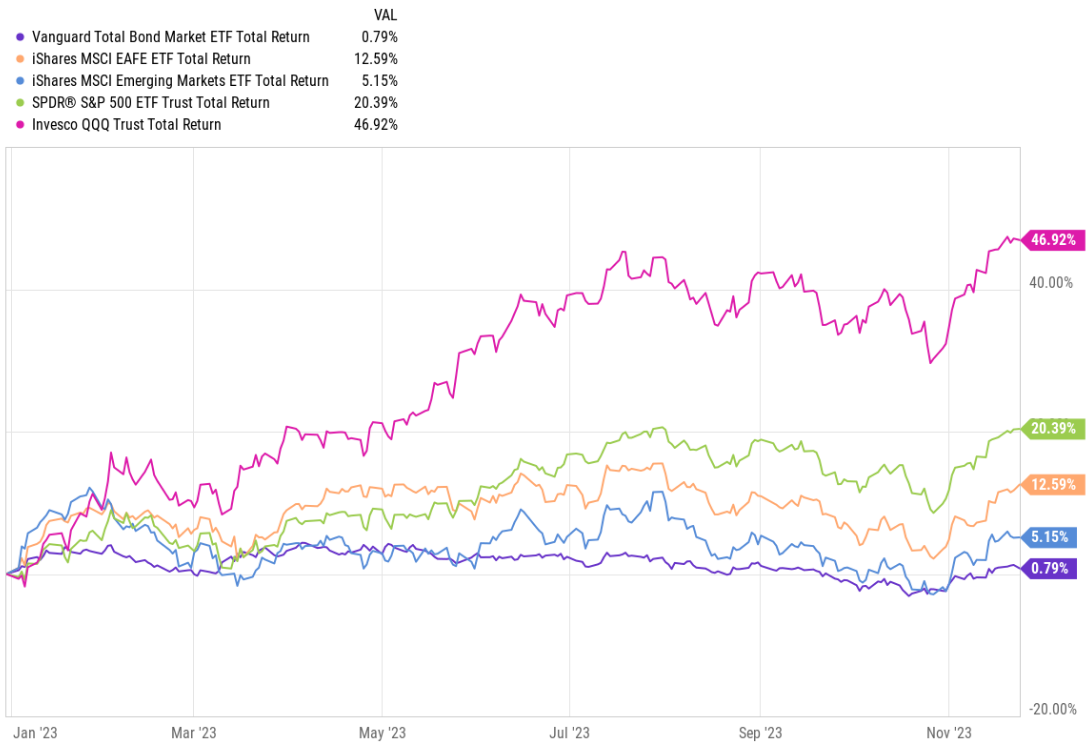Whenever I hear someone ask about market predictions I think about one of the many famous quotes from the Rocky saga. This time it’s from Rocky III, probably my favorite. It’s minutes before Rocky’s big rematch versus Clubber Lang and the villain is asked by a sports reporter for his thoughts on the coming fight. Here’s that eloquent exchange in brief.
Clubber: “Prediction?”
Reporter: “Yes, prediction…”
Clubber: “Pain.”
And then we have the famous prediction of more than 100 years ago from either Henry Poor, a founder of Standard & Poor’s, JD Rockefeller, or JP Morgan himself on what stock prices will do in the coming weeks: “I think they will fluctuate.” Sometimes the best predictions are the simplest.
All kidding aside, I bring this up because predictions can have a lot of biases built into them and it can be hard to see through the clutter. In my industry there’s a lot of financial bias, so to speak, that can make predictions and longer-term forecasts can seem more like product pitches. My favorites are often from the “permabears” who constantly expect the sky to fall. They cherry-pick data to craft compelling stories about impending pain before offering their own complicated and expensive investment products or services as the solution. There are permabulls too, but they don’t seem to get as much airtime as their bearish counterparts. Fear sells, as they say.
I think the goal when looking at market predictions is to get a sense for what reasonable people (very subjective these days, I know…) are expecting the economy and markets to do during the next year so we can plan accordingly. It’s less about which hot stock or precious metals to buy and more about context.
In that vein let’s look at predictions for the stock market this year. We’ll stick with JPMorgan and Schwab and links to more details from each are below.
JPMorgan – Dr. David Kelly, the firm’s Chief Global Strategist is sort of a guru in my industry and frequently holds conference calls for advisory firms. I’ve been following him for years and one of things I like is that he’s a macro guy and doesn’t push products or services. Anyway, he’s someone to pay attention to and here are some tidbits from his (and from others within the firm) 2024 predictions.
2024 = 2% economic growth, 0 recessions, 2% inflation, and unemployment at 4%. This catchy description is what the soft-landing scenario we’ve discussed might look like. JPMorgan expects 2024 to be more volatile than last year but the generally positive economic backdrop is expected to help hold up stock prices even as prices reset to an environment of higher interest rates. A handful of stocks within the S&P 500 are pretty expensive compared to long-term averages while the rest of the index is more reasonably priced. JPMorgan favors large cap stocks this year but suggests buying companies with “resilient profits, solid balance sheets, and favorable relative valuations.” Basically, stay invested but batten down the hatches.
Schwab – Liz Ann Sonders, the firm’s Chief Market Strategist, is always worth paying attention to. She and other strategists at Schwab suggest that while a traditional recession in the broader economy is still possible this year, a more likely outcome is a nuanced “rolling recession”, where some sectors struggle while others hold up well enough to average them out. That said, Liz Ann and her team at Schwab do seem a little dour, or perhaps just realistic, about our economy and the markets this year. Factors impacting this could be the declining financial health of consumers that has been showing up in reports lately and the yield curve being inverted for over a year, both of which usually imply recession.
The bond market may have adjusted quickly to the higher interest rate environment, but the stock market still has some catching up to do. Investors may be a little complacent about that, the firm says. Schwab is skeptical about current assumptions for corporate earnings growth and, like JPMorgan, suggests buying the stock of more profitable companies with manageable debt, not just those with huge (anticipated or actual) earnings and/or large debt loads. Diversification is important this year, Liz Ann says, and she emphasizes the importance of “adding low and trimming high” via rebalancing given the runup in portfolio values late last year.
https://www.schwab.com/learn/story/us-outlook-one-thing-leads-to-another
There’s no shortage of other predictions out there but many seem within range of these two. Let me know if you find one that seems interesting.
All in, these two forecasts present a mixed picture while not being overly negative. There’s still a low chance of a major recession but some sectors, perhaps Consumer Discretionary and Technology, could feel some pain assuming the broader economy slows as expected. Stock prices are high but that’s skewed by a handful of popular companies mostly having to do with those two sectors. Fed policy, and potentially unrealistic investor expectations about it, should keep playing a major role in market dynamics this year as well.
To me it’s wise to expect more volatility as investors have these and myriad other issues to contend with. And it being an election year will certainly impact investor psychology. But don’t worry about that too much. According to my research partners at Bespoke Investment Group, since 1928 the fourth year of the presidential cycle has been positive almost 75% of the time with a median return of over 9%. If this year matches that, I’ll take it!
That said, this sort of environment demands detailed portfolio construction and big-picture rebalancing of stocks versus bonds at the allocation level in your portfolio. It’s also important to diversify and rebalance within asset classes and styles (growth versus value) to ensure your portfolio isn’t overweight in potentially overvalued areas. Beyond that, it’s best to reset expectations for this year. Positive, yes, but never easy.
As I mentioned last week, this is happening already on your behalf if I’m managing your investments but I welcome your questions.
Have questions? Ask us. We can help.
- Created on .





